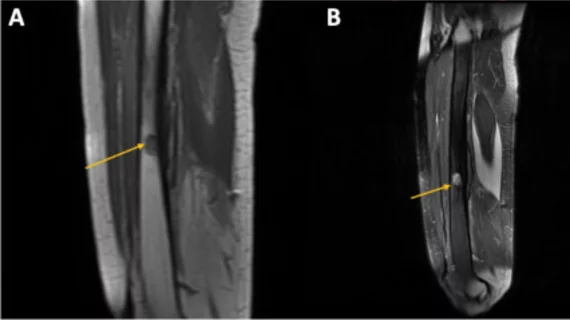MRI scoring system could prevent unnecessary biopsy of osseous lesions
A novel MRI scoring system for osseous lesions identified following radiation therapy treatment could prevent patients from having to undergo further invasive testing.
Osseous lesions emerging on imaging after treatment are common for patients who have completed radiotherapy for soft tissue sarcoma (STS) management. Radiation-induced osteitis may not cause clinical symptoms, but its presence often sparks concern about malignancy, causing many patients to be sent for biopsy, authors of a new paper in the European Journal of Radiology warn.
“Findings on imaging can be concerning for radiation induced secondary sarcoma, primary tumor recurrence, or metastasis to bone," corresponding author Gayathri Vijayakumar, from the Division of Orthopedic Oncology at Rush University Medical Center in Chicago, and colleagues explain. "While biopsies can readily distinguish radiation osteitis from malignancy, these procedures are invasive, costly, and the process can cause psychological distress on patients as they await results.”
The ability to distinguish benign from malignant lesions on imaging would be beneficial in sparing patients from unnecessary procedures. The team proposed an MRI scoring system that assigns points based on three parameters: morphology, signal intensity and progression.
Each parameter is scored from 0 to 3 based on the imaging details observed within each parameter, with 0 being considered normal and 3 representing the most suspicious findings. The system was tested on 156 MRIs of 30 STS patients who had undergone radiotherapy to determine score thresholds most indicative of malignancy.
Osseous metastasis was not a common finding on MRI, but those who were eventually diagnosed had scores of 5.5 or higher. This threshold yielded substantial interobserver agreement.
Based on the system, 66.7% of patients with a score of 6 and 100% of patients with a score of 7 had confirmed regional metastatic disease to bone.
“From this novel scoring system, a score of 6 is likely suggestive of a malignant lesion and should warrant biopsy while a score of seven is diagnostic of a malignant lesion,” the group suggests. “We would recommend biopsy for MRIs with scores of 6 or above and no specific follow up for MRIs with scores of 0 to 3.”
The group adds that their system can be easily implemented into clinical practice as is.
The study abstract is available here.

